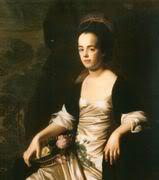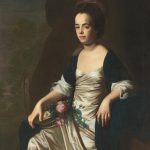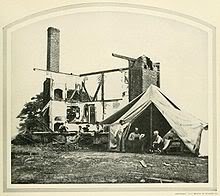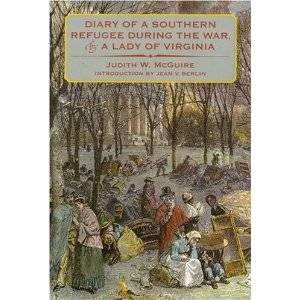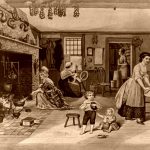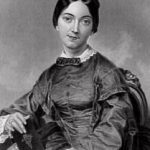Prominent Essayist and Advocate for Women’s Equality
Judith Sargent Murray was a poet and playwright, and the most prominent woman essayist of the eighteenth century. She was also among America’s earliest champions of financial independence and equal rights for women. She argued forcefully for improved female education and for women to be allowed a public voice.
Childhood
Judith Sargent was born May 5, 1751 in Gloucester, Massachusetts, to the wealthy merchant family of Winthrop and Judith Saunders Sargent. Contrary to Sargent family legend, Judith did not study alongside her brother Winthrop while he was tutored to enter Harvard. Although she considered herself as capable as her brother, her parents provided a typical education for a merchant-class daughter – reading, writing and training in the domestic skills of sewing and household management to prepare her for married life.
Judith never forgot the discrepancies between male and female education she had experienced. She believed that with quality education women’s accomplishments would equal those of men’s if parents raised their daughters to “reverence themselves,” as she put it in one of her essays. The Sargent family library was vast, which allowed her to read history, philosophy, geography, and literature.
Like most children in Gloucester, Judith was raised in First Parish Church whose Congregational ministers ruled religious and civic life. She learned that only a few people were predestined for heaven, while most would spend eternity in hell.
In 1769, Judith fulfilled the one role expected of her and married John Stevens, a well-to-do ship’s captain from a prominent Gloucester family who spent most of his time at sea. The young couple resided with John’s parents until they could build a house of their own, allowing Judith to live within a short distance of the Sargent and Saunders homes. The couple had no children.
Universalism
In 1770, Judith’s father Winthrop Sargent read James Relly’s book, Union. Relly’s Universalism was characterized by its doctrine of universal salvation – that all of humankind could be saved, not just the elect. It was a radical departure from traditional doctrine, and Judith was among those who embraced Relly’s hopeful view of this world and the hereafter.
In 1774, when Winthrop Sargent learned that one of Relly’s proteges British Universalist preacher John Murray was lecturing in Boston, he invited him to visit Gloucester. On November 3, John Murray visited the Sargent family home where Judith met him for the first time. She knew right away that in Murray she had found a mentor, spiritual teacher and intellectual companion.
Judith was among the group of people of Gloucester, led by her father, who first embraced this liberal religious belief, and her father provided financial support for Murray’s work. While Murray moved to Gloucester shortly thereafter, he traveled frequently to other parts of New England. Judith asked Murray if he would like to correspond with her and he accepted.
At first, Judith’s letters were filled with theological subjects, but soon she was reporting fearful goings-on in Gloucester concerning the coming war with Great Britain. When British warships appeared off the coast in 1775 and Judith and her family retreated for their safety to Ipswich. Her Loyalist uncle Epes Sargent was forced by angry Patriots to leave town.
Judith – who eventually supported separation from the mother country – prayed for a peaceful resolution. Many of her friends and family had economic and familial ties to Great Britain. She abhorred violence and despised the “hostile terror” that was fueling civil war, driving persons of “unblemished integrity” from their homes and families.
These were tense times in Gloucester, and not simply because of the war. In 1780 John Murray’s Universalist supporters were expelled from First Parish Church for for refusing to attend, Judith among them. The minister they wanted to support in their own church was John Murray.
Also in 1780, Judith and John Stevens adopted two orphan girls – her cousin Polly Odell and his niece Anna Plummer. Judith’s concern for their religious upbringing, and for that of the growing number of Universalist children in Gloucester, propelled her into the role of religious educator.
Encouraged by the parents of these children to write down what she was teaching, in 1782 Judith privately published a Universalist catechism. It is considered the earliest writing by an American Universalist woman, and the first religious education material produced for Universalists. The pamphlet included Judith’s first public assertion of male and female equality, a hallmark of Universalism.
In 1782, the Universalists’ defiance of First Parish Church led the ruling ministers to seize valuable goods from Winthrop Sargent, Epes Sargent and others to sell at public auction. Although the Universalists had formed their own organization, they were still expected to pay taxes to support the established church – which they refused to do.
The Universalists persuaded John Murray to bring their case before the Massachusetts Supreme Judicial Court and argue for the right to separate from First Parish and support their own church. In 1786, the court ruled in favor of the Universalists, the first ruling for freedom of religion in America.
The following year Judith was one of the signers of the Articles of Association which created the Independent Church of Christ. The Sargent family then donated the land on which they built America’s first Universialist meetinghouse, with John Murray as their pastor.
Meanwhile, the Revolutionary War had devastated John Stevens’ shipping business. Judith’s life took a dramatic turn in 1786 when her husband revealed just how much his debts had accumulated since the trade embargoes and a series of storms that had destroyed some of his cargo and ships.
Essays and Pseudonyms
Judith began to publish her work in the hope of providing income for her family. Her first piece, “Desultory Thoughts upon the Utility of Encouraging a Degree of Self-Complacency, Especially in Female Bosoms,” appeared in Gentleman and Lady’s Town and Country Magazine in 1784. According to eighteenth-century etiquette, it was written under an assumed name – Constantia.
Judith, her husband and Anna Plummer spent the winter of 1785–86 literally locked inside their home to keep John Stevens safe from being thrown into debtors’ prison. That spring, as a desperate last resort, Stevens secretly left Gloucester for the West Indies where he hoped to restore his financial standing by participating in international trade.
To avoid debtor’s prison, Stevens escaped Gloucester on board one of Winthrop Sargent’s vessels. Stevens died while attempting to set up a new business in the West Indies. When Judith learned of her husband’s death, she resigned herself to life as a widow.
To her surprise, as he was about to sail for England in early 1788, John Murray wrote Judith a love letter from Boston Harbor. She noted that he
acknowledged he had long loved me, even from the commencement of our acquaintance, with ardour loved me, but that he would have sacrificed his life rather than have admitted a thought in this regard to me, which my own guardian angel would blush to own, but that, as I had now for many months been released from my early vows, he presumed to calculate upon a favourable hearing.
Judith married John Murray in Salem, Massachusetts, on October 6, 1788. Her second marriage was much more emotionally fulfilling than the first had been, and she found in John Murray a husband and friend who not only tolerated but actually encouraged her to write for publication.
She was soon pregnant with their first baby; she was thirty-nine years old and had almost given up hope. But in August 1789, the little boy they had planned to name Fitz Winthrop was stillborn. Judith nearly died as well, and faced a long recovery. While she was bedridden, she wrote poetry, and hoped to develop a wider audience for her political and creative ideas.
In 1790, Judith submitted what would become her landmark essay. “On the Equality of the Sexes” appeared in the March and April issues of the Massachusetts Magazine, closely followed by “On the Domestic Education of Children” in May.
Later that year, when Judith embarked on a six-month journey to Philadelphia with Murray, she experienced a dizzying array of people, places, events, and ideas. Her meetings with President George Washington, Martha Washington, Vice President John Adams and Abigail Adams, and other dignitaries must have heightened her desire to participate in conversations about the role of women in the New Republic. But Judith had learned that as a woman, writing was the only way to have a voice.
When Judith returned home, she was pregnant again at the age of forty-one. This time, though, her maternal hopes were realized when she gave birth on August 22, 1791, to a healthy baby girl they named Julia Maria. Judith’s contentment overflowed that year when the Massachusetts Magazine declared “Constantia” one of its ablest poets.
Despite John’s many absences when he was invited to preach outside of Gloucester, Judith now enjoyed a happy family life and a promising literary career. Her decision to create a new essay series in 1792 for the Massachusetts Magazine stemmed from the knowledge that her friends and family knew “Constantia’s” real identity.
This time, in choosing a pen name, Judith settled on a male persona as “The Gleaner” to engage more male readers in her ideas and avoid being dismissed as a female writer. “The Gleaner” addressed many of the political and social issues that were close to Judith’s heart, and developed quite a following. “His” identity was kept secret even from her husband.
The Gleaner wrote:
Was I the father of a family, I would give my daughters every accomplishment which I thought proper; and, to crown all, I would early accustom them to habits of industry and order that they should be enabled to procure for themselves the necessities of life, thus independence should be placed within their grasp.
In 1793 John Murray was called to the Boston Universalist church. Upon Judith’s arrival in Boston, Thomas Paine, the editor of the Federal Orrery, one of Boston’s bi-weekly newspapers, approached her to develop a column. She submitted five installments of “The Reaper.” To her dismay, Paine not only edited her work but changed actual words and sentences, and Judith ended their relationship.
She went on to publish additional essays and used additional pseudonyms, including “Honora” and “Martesia,” and her writing became quite popular. A student of history, Judith used examples of women’s accomplishments dating to ancient times to prove her points and to provide leadership in what would become a long struggle for women to become fully functioning members of society.
In 1794, the family moved to Boston where John became the minister of Boston’s Universalist congregation. In 1795 Judith wrote her first play, The Medium, which was performed at Boston’s Federal Street Theatre, making Judith the first American author to be produced on stage. (Others, including Mercy Otis Warren, had written plays that were read, but the Puritan ban on acting prevented them from being staged.)
In 1798 Judith self-published The Gleaner, a three-volume collection of her essays and plays. Essays in The Gleaner championed the new republic; considered citizenship, virtue and philanthropy; and decried war and violence of any kind. The book firmly established Judith Sargent Murray as a leading author and advocate for women’s equality, education and economic independence. In one of the essays, she wrote:
I expect to see our young women forming a new era in female history… The noble expansion conferred by a liberal education will… give them a glance of those vast tracts of knowledge which they can never explore, until they are accommodated with far other powers than those at present assigned them.
During the early 1800s, Judith was asked by her cousin Judith Saunders and Clementine Beach to help them start a female academy in Dorchester, Massachusetts. Judith obliged by placing advertisements, securing property and recruiting students. The Ladies Academy opened in 1803 and students were taught scholarly subjects along with traditional domestic skills.
During these years, Judith also oversaw the education of twelve children, including her daughter, the children of her brothers and those of family friends. When she traveled, she befriended more young people and maintained a regular correspondence with them. Throughout her life, Murray was a dedicated teacher to all of the young people with whom she came into contact.
In 1809 John Murray suffered a stroke that left him partially paralyzed. His mind was still alert, but he could no longer work. As the Boston Universalists found it difficult to support the Murray family along with a new minister, Judith struggled to make ends meet. In 1812 the Murrays published John’s two-volume Letters and Sketches of Sermons which they hoped would bring them income, but it did not do well.
That same year, Julia Maria married Adam Lewis Bingaman, a Harvard student from Natchez, Mississippi, who had boarded with the Murrays for a short time. Judith’s first grandchild, Charlotte Bingaman, was born the following year.
In 1815 John Murray died at the age of seventy-four and after twenty-seven years of marriage. Although bereft, Judith oversaw two funeral services for her husband, one in Gloucester and the other in Boston. She also completed and published John’s autobiography, Records of the Life of the Rev. John Murray, in 1816.
In 1818, when Adam Bingaman sent for Julia Maria and Charlotte to move to Natchez, Mississippi, Judith went with them to live at the Bingaman family plantation, Fatherland. Nearby was her brother Winthrop’s large family, including children she had helped raise years earlier in Boston.
Judith Sargent Murray died June 9, 1820, in Natchez and was buried in the Bingaman family Hurricane Plantation cemetery. Her daughter inscribed on her gravestone, “Dear spirit, the monumental stone can never speak thy worth.” Julia Maria and her daughter died within a few years.
Judith Sargent Murray made copies of her letters into blank volumes called letter books for the years 1774 to 1818. She did this in part to create a historical record of what she knew were extraordinary times. These letter books – twenty volumes containing approximately 2,500 letters – were found in 1982 and are housed at the Mississippi Department of Archives and History.
SOURCES
Judith Sargent Murray
Judith Sargent Murray Society
Wikipedia: Judith Sargent Murray
National Women’s History Museum: Judith Sargent Murray
